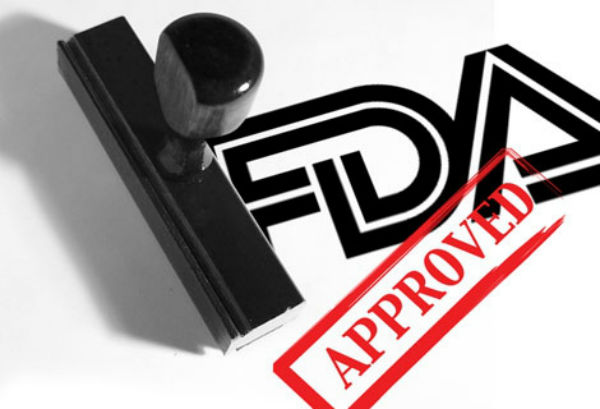add
FDA Approval of EEG Aid for ADHD
There has been a lot of discussion since the FDA announced approving a new medical device just approved to assist in the diagnosis of ADHD in children and adolescents. “The device, the Neuropsychiatric EEG-Based Assessment Aid (NEBA) System, is based on electroencephalogram technology, which records different kinds of electrical impulses given off by neurons in the brain and the number of times the impulses are given off each second. The NEBA System is a 15- to 20-minute noninvasive test that calculates the ratio of two standard brain-wave frequencies, known as theta and beta waves; the ratio has been shown to be higher in children and adolescents with ADHD than in those without it, according to FDA” (http://alert.psychiatricnews.org/2013/07/ fda-approves-device-to-help-diagnose.html). However, the use of this technology to assist in the diagnosis of ADHD is not new.
David Rabiner, Ph.D. (Senior Research Scientist, Duke University) published a report (Attention Research Update April 2001) titled “New Support for the Use of qEEG scanning in Diagnosing ADHD” (http://www.helpforadd.com/2001/april.htm). This report acknowledged utilizing the measure of the ratio of theta to beta waves in the prefrontal cortex as a marker for ADHD (ages 6-20). Therefore the technology is not new, and although the NEBA System is helping to bring scientific evidence into the realm of psychiatric diagnosis, there is more to it then has been discussed thus far.
Association between ADHD and intensity of sunlight: Can ADHD be prevented?

Nijmegen, March 26th, 2013 – A study published today in Biological Psychiatry sheds new light on the increasing rates (prevalence) of attention-deficit/hyperactivity disorder, known as ADHD. Children with ADHD have problems with inattention, distractibility, disorganization, impulsiveness, and overactivity. This study found that “sunny” regions with high solar intensity, such as the US states of California, Arizona, and Colorado, and countries like Spain and Mexico have lower prevalence of ADHD. An apparent protective effect of sunlight accounted for 34-57% of the variance in ADHD prevalence. The authors speculate that this may be related to sunlight’s effects on preventing circadian rhythm (“biological clock”) disturbances. These results suggest ways to prevent or treat ADHD for a substantial sub-group of patients…
Read the full PDF paper “Geographic Variation in the Prevalence of Attention-Deficit/Hyperactivity Disorder: The Sunny Perspective” by Martijn Arns, Kristiaan B. van der Heijden, L. Eugene Arnold, and J. Leon Kenemans.
The Effects of QEEG-Informed Neurofeedback in ADHD: An Open-Label Pilot Study

Martijn Arns • Wilhelmus Drinkenburg • J. Leon Kenemans
Abstract In ADHD several EEG biomarkers have been described before, with relevance to treatment outcome to stimulant medication. This pilot-study aimed at personalizing neurofeedback treatment to these specific sub-groups to investigate if such an approach leads to improved clinical outcomes. Furthermore, pre- and post-treatment EEG and ERP changes were investigated in a sub-group to study the neurophysiological effects of neurofeedback. Twenty-one patients with ADHD were treated with EEG-informed neurofeedback and post-treatment effects on inattention (ATT), hyperactivity/impulsivity (HI) and comorbid depressive symptoms were investigated. There was a significant improvement for both ATT, HI and comorbid depressive complaints after QEEG-informed neurofeedback. The effect size for ATT was 1.78 and for HI was 1.22. Furthermore, anterior individual alpha peak frequency (iAPF) demonstrated a strong relation to improvement on comorbid depressive complaints. Pre- and post-treatment effects for the SMR neurofeedback sub-group exhibited increased N200 and P300 amplitudes and decreased SMR EEG power post-treatment.
This pilot study is the first study demonstrating that it is possible to select neurofeedback protocols based on individual EEG biomarkers and suggests this results in improved treatment outcome specifically for ATT, however these results should be replicated in further controlled studies. A slow anterior iAPF at baseline predicts poor treatment response on comorbid depressive complaints in line with studies in depression. The effects of SMR neurofeedback resulted in specific ERP and EEG changes.
Read the full text here The Effects of QEEG-Informed Neurofeedback in ADHD:
An Open-Label Pilot Study – This article is published with open access at Springerlink.com Applied Psychophysiology and Biofeedback. doi: 10.1007/s10484-012-9191-4
Neurofeedback Demonstrated on “The Doctors”
On this episode of the Doctors Dr Michael Linden helps “Noah” with his ADD. Part 1 of this story give a bit of information about what Noahs parents have been dealing with and the struggle they face with deciding whether or not to medicate their young child.
In Part 2 you see how Noah parents learn there are alternatives to Ritalin and other drugs that may be given to their child. Learn about how Neurofeedback and EEG Brain Mapping may be able to help without the use of dangerous pharmaceutical drugs.
Dr. Linden is a Clinical Psychologist and Nationally Certified in Neurofeedback and Biofeedback. He is the director of The Attention Learning Center, which has offices located in San Juan Capistrano, Irvine and Carlsbad, California.
Dr. Linden is a regular contributor to the Journal of Neurotherapy and has been a speaker in many seminars and conferences related to ADD/ADHD and neurotherapy.
BRAINnet – Innovative Integration Analysis Challenge
From BRAINnet – Brain Research And Integrative Neuroscience Network
The purpose of this challenge is to promote a more integrative and innovative approach to Brain (EEG) – Body (Heart Rate) analysis. Brain Resource is sponsoring the challenge with the winner to receive $5,000USD.
The Challenge
Take 20 EEG and Heart Rate recordings from children diagnosed with ADHD and 20 recordings from a control population, and develop an analysis method that demonstrates any new insight relevant to ADHD using the data. The insight may have a basic science or applied clinical perspective.
Each dataset was recorded during a Go/NoGo paradigm and contains EEG, Heart Rate, respiration and Sweat Rate (skin conductance) channels, as well as stimulus and response information. The data sets are sourced from the Brain Resource International Database via BRAINnet.
Neurofeedback and the Brain
Neurofeedback is an emerging neuroscience based clinical application, and understanding the underlying principles of neurofeedback allows the therapist to provide referrals or treatment, and provides clients with a framework for understanding the process. The brain’s electrical patterns are a form of behavior, modifiable through “operant conditioning,” with the excessive brain frequencies reduced, and those with a deficit are increased. The learning curve for EEG has been described (Hardt, 1975).
Neurotherapy using slow cortical potentials also shows promise in the treatment of epilepsy (Kotchoubey et al., 2001; Birbaumer et al., 1981; Sterman, 2000). Neurotherapy has also been used for ADD/ADHD (Monastra, Monastra, & George, 2002) depression (Rosenfeld, 1997), anxiety (Vanathy, Sharma, & Kumar, 1998), fibromyalgia (Donaldson, 2002), and for cognitive enhancement (Budzynski, 2000; Klimesch, et al.). Commonly reported success rates of 60 to 90% are reported (Wright & Gunkelman, 1998).
Neurofeedback is an emerging neuroscience based clinical application based on the general principles of biofeedback or cybernetics. The Neurofeedback process involves training and learning self regulation of brain activity. Understanding the underlying principles of this process allows the therapist to provide referrals or treatment to their clients with some added understanding, and provides clients with a framework for understanding the neurofeedback process. The following short paper will provide a quick review of the brain’s function, and the underlying process involved in neurofeedback, a technique that will allow the client to better regulate and operate their brain.
The brain controls its own blood supply through the dilation and constriction of the blood vessels, and the blood flow is directed to areas that are more active through this self-regulation. The blood supply’s flow, along with the utilization of the oxygen and glucose the blood carries is measured as “perfusion,” a measure that is clearly seen in some of the modern imaging techniques, such as Positron Emission Tomography (PET) and SPECT technology. Though these techniques are invasive, requiring the injection of small amounts of very short half-life radioactive materials, they do give good resolution of the perfusion due to the emission of the positrons, which are emitted from where the brain utilizes the oxygen and burns the glucose carried by the blood flow.
New research shows: Neurofeedback is an ‘Evidence-Based’ treatment for ADHD.
Nijmegen, July 16th 2009 – Neurofeedback – also called EEG Biofeedback – is a method used to train brain activity in order to normalize Brain function and treat psychiatric disorders. This treatment method has gained interest over the last 10 years, however the question whether this treatment should be regarded as an Evidence-Based treatment was unanswered until now. Tomorrow a study will be published in the scientific journal ‘EEG and Clinical Neuroscience’ demonstrating that Neurofeedback can indeed be regarded as an evidence-based treatment for Attention Deficit- / Hyperactivity Disorder (ADHD).
Neurofeedback is a treatment where real-time feedback is provided for specific brain activity (most often EEG) in order to learn the brain to suppress or produce specific brain activity. This method was initially discovered for the treatment of Epilepsy and from 1976 investigated further for the treatment of ADHD. This technique has become more popular by clinicians worldwide, and is currently provided for the treatment of several disorders. Critics have often questioned the efficacy of Neurofeedback and whether it can be considered an Evidence Based treatment or not.
In collaboration with researchers from Tübingen University (Germany), Radboud University (Nijmegen, the Netherlands), Brainclinics and EEG Resource Institute a so-called meta-analysis was conducted on all published research about Neurofeedback treatment in ADHD. This meta-analysis included 15 studies and 1194 ADHD patients. Based on this study – which will be published in the July issue of EEG and Clinical Neuroscience – it could be concluded that Neurofeedback can indeed be considered an Evidence-Based treatment for ADHD. The results show that neurofeedback treatment has large and clinically significant effects on Impulsivity and Inattention and a modest improvement of Hyperactivity.
EEG based Personalized Medicine in ADHD
Neurophysiological studies in ADHD have shown a relatively uniform picture with regards to EEG – QEEG data (based on group data). Most studies find excess slow brain activity (theta) (Hermens et al., 2004; Mann et al., 1992; Chabot and Serfontein, 1996; Clarke et al., 1998, 2001; Lazzaro et al., 1998, 1999) and a decreased fast brain activity (beta) (Hermens et al., 2004; Clarke et al., 1998; Mann et al., 1992; Lazzaro et al., 1998, 1999). Theta EEG activity is often associated with an “inattentive” or a dreamy state, and beta activity is often seen when the brain is very busy with for instance solving a cognitive task. Figure 1 shows an example of this based on the data of the Brain Resource International Brain Database of 275 patients with ADHD. In this example the increased theta and decreased beta can be clearly seen, with a frontal localization.
Theta Absolute Beta Relative Beta
Figure 1: This figure shows the average brain activity (quantitative EEG – QEEG) of 275 children with ADHD, compared to a control group. On the left the increased theta EEG activity (p<.0001) can be seen, in the middle the absolute beta EEG activity (p<.0001) and on the left the decreased relative beta EEG activity (p<.0001). This deviant brain activity has a fronto-central localization. This pattern is found in almost all ADHD studies.


